There are many words that could be used to describe Wyatt Earp: fearless gunfighter, uncompromising lawman, deliverer of frontier justice. There can also be a few more words like murderer or con-man or pimp.
As you are about to see, Wyatt Earp was a complex character full of features and foibles. An icon of the Old West? Undoubtedly, but calling him a “hero” might be stretching it a bit. He’s had his good moments, but his life was also full of questionable actions. His persona as a paragon of justice in those wild, ruthless frontier days was carefully crafted after his death, first by a biography and then by TV shows, movies, and more books.
Today we will take a look at all the big events in his life: a 30-second shootout that defined the Wild West; a quest for revenge taken straight out of the pages of an adventure novel; a boxing match that might have shown us that everyone could be bought for the right price. Good or bad, these actions helped mold one of the most captivating and legendary figures in American history.
Early Life & Family
He was born Wyatt Berry Stapp Earp on March 19, 1848, in Monmouth, Illinois, to Nicholas Porter Earp and Virginia Ann Cooksey. Wyatt had eight siblings, including one half-brother from his father’s first marriage. However, for the sake of brevity, we will only single out two brothers for now, Virgil and Morgan Earp, who became gunslinging lawmen like Wyatt and were right beside him during the infamous Gunfight at the O.K. Corral.
Image: Young Wyatt and his mom
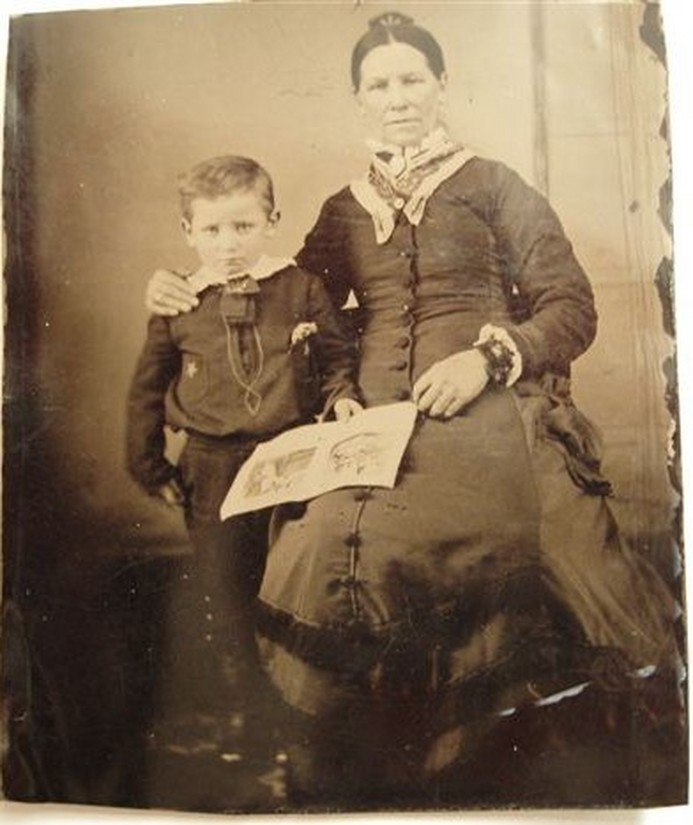
The family moved around during Wyatt’s childhood, first to Pella, Iowa, and then to San Bernardino, California. When the Civil War broke out, his three older brothers joined the Union Army. According to legend, Wyatt also wanted to join the fight, despite being only 13 years old at the time. He attempted to run away and enlist several times, but his father always managed to track him down and bring him home.
As a teenager, Wyatt worked various odd jobs, mainly helping his brothers in driving stagecoaches and transporting cargo. He also started gambling around this time, a lifelong passion of his, and got his first experience with refereeing boxing matches, something that will have a huge impact on his life much later.
In his early 20s, Wyatt Earp became a lawman for the first time. After a few years of traveling and working through the West, he settled down and rejoined his family who, by then, had relocated again to Lamar, Missouri. Nicholas Earp was the local constable there, but in 1869 he resigned his position and Wyatt was appointed as his replacement. At that same time, Earp fell in love and married 20-year-old Urilla Sutherland, but their relationship was short-lived. She died in 1870, either due to typhoid fever or childbirth complications.
Downward Spiral
As you might imagine, this loss affected Wyatt hard. First, he started neglecting his duties as a constable. Presumably, at one point, he was either fired or he quit his job and spent the next few years drifting from one city to another, going from saloon to bar to brothel.
Earp got into a few troubles with the law. He was accused of horse theft in Arkansas, was arrested but escaped jail and fled to Peoria, Illinois. Here, he reunited with his brother Morgan and was often reported to be in the company of a young prostitute named Sally Heckell who, at times, called herself the wife of Wyatt Earp. Going by the charges levied against the Earp brothers by Peoria lawmen, local authorities considered the two to be pimps who ran their own brothel.
It is possible that the brothers also took up buffalo hunting, although this is poorly attested. In fact, the only solid evidence is an entry in the diary of their young sister, Adelia Earp. She wrote that Wyatt and Morgan visited the family farm on her 11th birthday and brought her a lot of pretty clothes because they made “quite a heap of money” by hunting buffalo. Of course, it is also plausible that this was a lie so the brothers could hide their less-than-honorable true source of income.
Lawman Again in Kansas
Earp’s lawman career picked up again in 1874 when he was hired as an assistant marshal in Wichita, Kansas. The most memorable event from this period was a particularly embarrassing one for a man who built his reputation as a gunfighter. The young Wyatt Earp discharged his revolver by accident when he dropped it on the floor of a gambling house. The bullet passed through his coat and caused a quick evacuation of the saloon. Allegedly, Earp confessed to the incident to his biographer, Stuart Lake, but asked that he kept it out of the book.
In 1876, Earp left Wichita and joined the police force in Dodge City, Kansas, a famed frontier town during the Wild West. He stayed there for a few years, except for a brief spell where he is generally believed to have traveled to Deadwood, South Dakota, with his brother, Morgan.
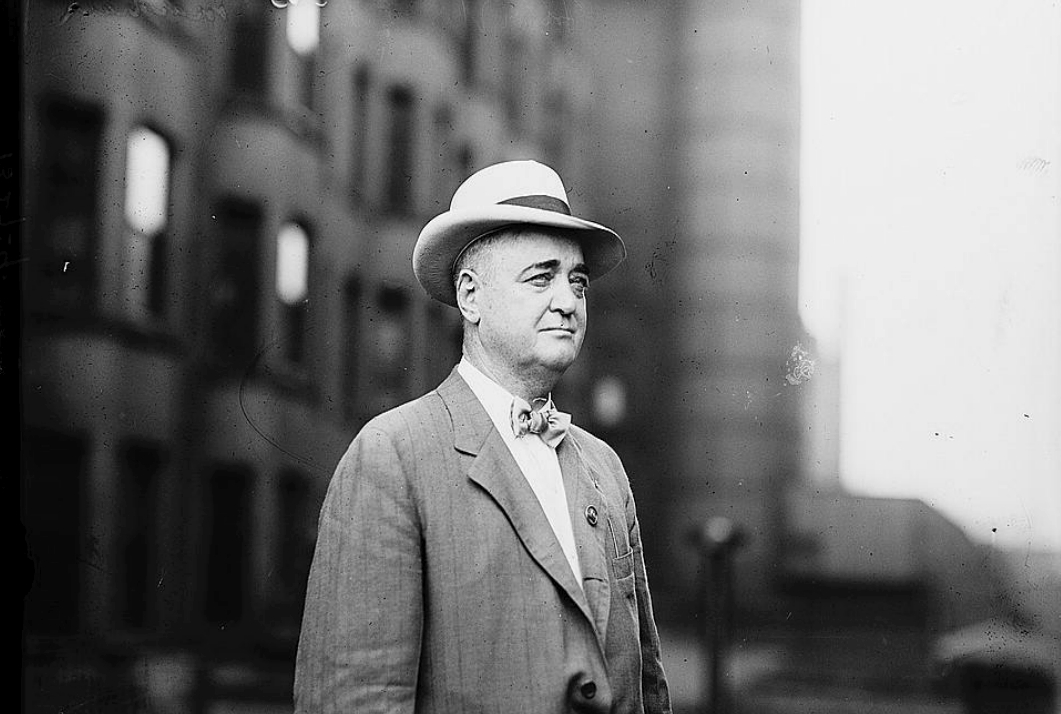
Wyatt got into his fair share of scrapes as a policeman in Dodge City and handled many of them alongside another noted gunslinger of the era, Bat Masterson, who we might see on this channel some day.
In 1877, Wyatt Earp left in pursuit of outlaw Dave Rudabaugh after the former robbed a railroad construction camp. He never caught up to the criminal, but the chase was noteworthy for a different reason – Earp met and befriended fellow gambler and gunslinger Doc Holliday.
Image: Doc Holliday
On another occasion, Wyatt Earp, Bat Masterson, and several other people got into a gunfight with a drunken posse that was shooting up the town. One of the gunmen named George Hoy or Hoyt was injured in the shootout and later died with many historians giving Earp the credit and touting George Hoy as the first man that Wyatt Earp killed. However, there was never any surefire evidence showing who actually hit him.
Another close call happened around September, 1878, when Ed Morrison and a rowdy posse of 25 other men were causing a ruckus at the Long Branch Saloon. Earp went to confront them and was aiming his gun at Morrison when one of his many compatriots reached for his own weapon. Fortunately, he never got a shot off because he was hit in the shoulder by none other than Doc Holliday who had since relocated to Dodge City and was gambling at the Long Branch Saloon when he stepped in to save his friend.
That is a nice story, but it probably never happened. Although Earp did say that Holliday once saved his life in Dodge City, there are no police records or newspaper stories of this event even though the city’s history is, otherwise, well-documented.
This seems like a good place to mention that many of these lesser-known anecdotes from Wyatt Earp’s life come to us from a single source – the biography of the aforementioned Stuart Lake titled “Wyatt Earp: Frontier Marshal”. Published in 1931, the book was absolutely instrumental in creating the Wild West persona of Wyatt Earp that we know today. However, calling it a “biography” is rather deceitful since it has about as much fiction as it does fact.
A perfect example of this is the Colt Buntline Special. This is one of the most famous guns of the Wild West because it was the gun of Wyatt Earp and it had a distinctive 12-inch barrel. However, the only problem is that the gun did not exist; not in Wyatt’s time, at least.
Lake described the weapon in detail and told a good story of how it was custom-ordered by dime novelist Ned Buntline who gave away five of these to famed Old West lawmen. It was popular enough to create a long-lasting myth that still raises doubts today. Colt eventually did start producing this gun during the 1950s, because of its popularity and connection to Wyatt Earp, and today it is a prized artifact for gun collectors.
Arrival in Tombstone
We got a bit off-track, but it is important to remember how easy it was to fabricate details about larger-than-life figures whose exploits were told mainly through newspaper stories and pulp novels. Now let’s get back to the good stuff as Wyatt Earp and his brothers relocated to the boomtown of Tombstone, Arizona.
He did so in December 1879, accompanied by Mattie Blaylock, a former prostitute who became his common-law wife. Tombstone had only been founded earlier that year once prospectors discovered silver in the area. In just several months, the community grew from 100 or so people living in shacks and tents to a proper town with over 1,000 residents. Older brother Virgil Earp was the town marshal while Wyatt and Morgan worked as private security by riding shotgun, quite literally, on Wells Fargo stagecoaches. Siblings James and Warren Earp also moved to Tombstone but, for the most part, stayed out of the gunslinging shenanigans. Rounding up their little posse was Doc Holliday who came a little later.
It didn’t take long for the Earps to confront the Cowboys, a group of outlaws who would quickly grow to despise them. Rather than being a traditional gang, the Cowboys were more of a primitive crime syndicate active in the Arizona Territory. They numbered hundreds of members that were only loosely-affiliated with one another. For now, we will only mention a few of them who played prominent roles in Earp’s story. They were the Clanton brothers, Ike, Billy, and Phineas; Frank Stillwell, Pete Spence, Curly Bill Brocius, Frank and Tom McLaury, Billy Claiborne, and Johnny Ringo.
Tensions kept rising as the two groups had run-ins with each other. Things took a serious turn in September, 1881, when two of the Cowboys, Stillwell and Spence, robbed a stagecoach on the Sandy Bob Line to Bisbee, Arizona. They were arrested by a posse which included two Earps, but were released. Virgil Earp arrested them again a few weeks later, this time on a federal charge of interfering with a mail shipment. They were again let go for insufficient evidence, but this act angered the local Cowboys, particularly the McLaurys. They claimed they would kill the Earps if they tried to arrest them again.
Gunfight at the O.K. Corral
After weeks of threats, the escalating situation came to a head on October 26, 1881. That morning, an incident between Wyatt Earp and Tom McLaury led to the former pistol whipping the latter for allegedly carrying a concealed weapon. Throughout the rest of the day, McLaury gathered more of his partners and the Cowboys were seen loitering angrily around town.
According to a recently-passed ordinance, people had to surrender any deadly weapons upon entering Tombstone. Marshal Virgil Earp intended to disarm the Cowboys and asked Wyatt, Morgan, and Doc Holliday to assist him. Five of them had gathered on Fremont Street, in a vacant lot near the O.K. Corral. They were Frank and Tom McLaury, Billy and Ike Clanton, and Billy Claiborne.
At around 3 p.m., the Earps confronted the Cowboys. According to his later testimony, Virgil demanded they surrender their weapons, but two of them cocked their revolvers. Then…the shooting started.
It is impossible to say with any certainty what the exact sequence of events was. The gunfight at the O.K. Corral lasted no more than 30 seconds, time during which around 30 shots were fired, filling the lot with black gunpowder smoke. At the end, Billy Clanton, Frank and Tom McLaury were dead. Ike Clanton and Billy Claiborne were, likely, unarmed and managed to run away right before the shooting started. Virgil and Morgan Earp and Doc Holliday had been shot, but their injuries were not serious. Wyatt Earp alone stood unscathed.
Aftermath
Just 30 seconds created the most famous gunfight in the history of the Wild West, although newspapers had a heavy influence on how it was remembered. For starters, despite its name, it never actually took place at the O.K. Corral, but rather next to it. Also, the whole thing was more Virgil’s affair rather than Wyatt’s but, for some reason, the media preferred to focus on the younger brother. Maybe it was because he was the one left standing or maybe this extra attention on Wyatt Earp was only applied retroactively as he continued to have more headline-making adventures while Virgil, for the most part, led a rather unassuming life from then on.
Either way, one part that usually gets left out of the story is the legal aftermath that came following the shootout. A few days later, Ike Clanton filed murder charges against the Earps and Doc Holliday. As Morgan and Virgil were still recuperating from their wounds, only Wyatt and Holliday were arrested and brought to court before Judge Wells Spicer.
There were plenty of testimonies but, unsurprisingly, they were often contradictory and were dependent on who the witness sympathized with. A lot of the focus was on who shot first, but most sources agreed that the first two shots which, ostensibly, belonged to Billy Clanton and Wyatt Earp, happened almost simultaneously. One historian who carefully compared all the neutral testimonies concluded that, by and large, they supported the account put forward by the Earps that they tried to disarm the Cowboys and the gunfight erupted at the provocation of Clanton and Frank McLaury. Judge Spicer agreed and cleared the Earps and Holliday of any wrongdoing.
Cowboys’ Revenge
The Earps won the fight, but they knew that there were other Cowboys out there who would be looking for revenge. As a precaution, the brothers moved their families to the Cosmopolitan Hotel so that they would be safer together.
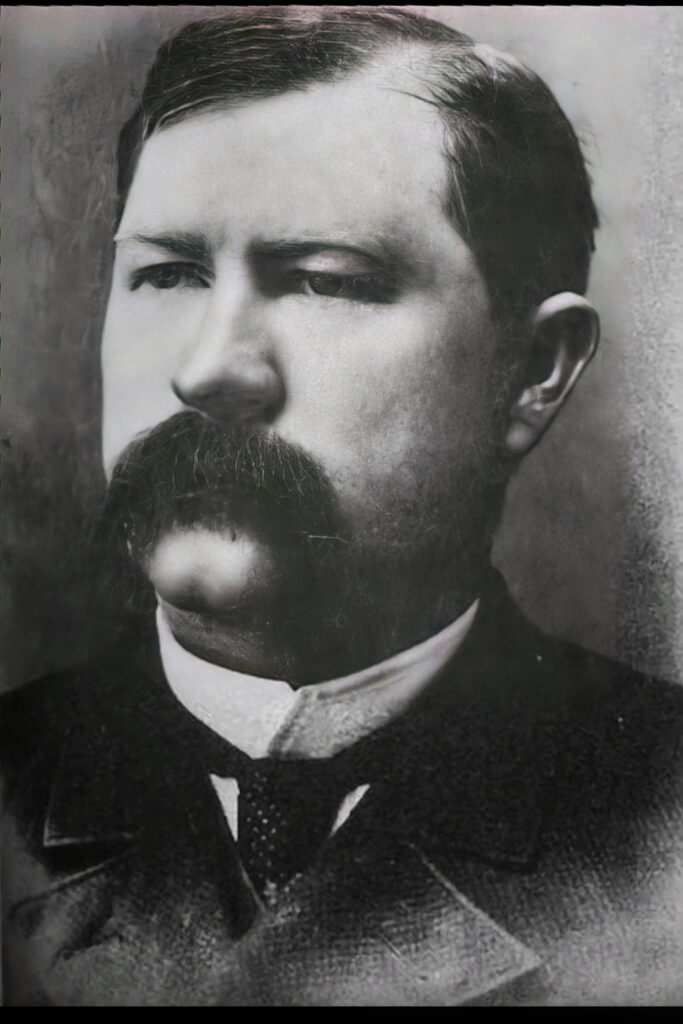
At around midnight on December 28, 1881, Virgil Earp was returning home to the hotel when he was ambushed by several men carrying shotguns. They unloaded three or four shots of buckshot into him, hitting Virgil in the left arm, hip, and groin. He stumbled into the hotel and, against all odds, the doctor managed to save his life, although Virgil permanently lost the use of his left arm. His shooters were never identified, although strong suspects included the remaining Clanton brothers, Pete Spence, and Johnny Ringo.
The reprisals were not over. Almost three months later, Morgan Earp was ambushed in a similar way. On March 18, 1882, he was inside a billiards parlor playing pool alongside Wyatt and a few of their cohorts. Shots came in through the window from one or more unidentified assailants. One of the bullets hit Morgan in the spine and pierced his left kidney. Another one hit the wall inches from Wyatt’s head. A doctor was brought in but it was clear that the injuries were fatal. According to Stuart Lake, Wyatt and Morgan often talked about people having “visions of heaven” on their deathbed and Morgan’s last words were whispered in his brother’s ear, saying “I can’t see a damn thing”.
Earp’s Vendetta Ride
In between the two attacks, Wyatt Earp had been made deputy U.S. marshal to replace his brother, Virgil, who was no longer able to fulfil his duties. After the first ambush, Earp still held out hope that the system would deliver justice to the men responsible. However, there was a dearth of evidence, not to mention the fact that any suspect had ten other Cowboys ready to provide alibis for them.
After Morgan was killed, Wyatt Earp realized that he will not have justice, but he could still have vengeance. He embarked on a crusade where he gathered a posse of men he trusted and who knew how to handle a gun and set off to take out the Cowboys. It became known in western lore as Earp’s vendetta ride.
It did not take long for Earp’s posse to claim their first victim. The day after Morgan’s death, his body was put on a train and sent to Colton, California, where his widow and parents were. Also on the train were Virgil and his wife who were leaving Tombstone as it simply became too dangerous for them.
Wyatt received information that some of the Cowboys were in Tucson where the train would make a long stop. He believed they were waiting to finish off Virgil so he and his men accompanied them. Indeed, the Cowboys were there, but made no attempt on Virgil’s life as he was surrounded at all times by five men armed to the teeth. When his train departed, people heard multiple gunshots coming from the train yard and saw men running away from the scene. Left behind they discovered the riddled body of Frank Stillwell, a Cowboy and chief suspect in Morgan’s murder.
According to Wyatt Earp’s version of events given decades after the fact, he saw Stillwell and Ike Clanton waiting in ambush on a flatcar in the train yard. He and his men went after them and the Cowboys ran away, but Stillwell stumbled and got left behind. Earp caught up to him and discharged both shotgun barrels into Stillwell when he tried to grab the weapon. The other gunmen shot Stillwell’s corpse some more for good measure.
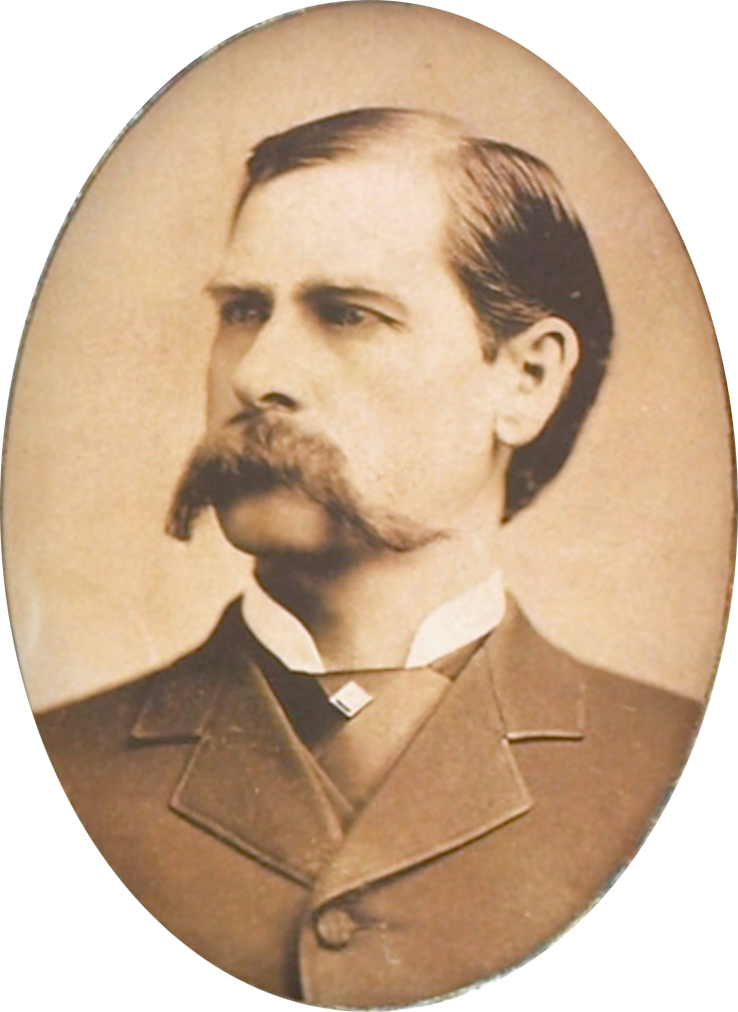
Shockingly, even back in the Wild West, people weren’t ok with Earp’s extra-judicial killing. Five men were indicted for Stillwell’s murder and arrest warrants were issued for Wyatt and Warren Earp, Doc Holliday, Sherman McMaster and Jack “Turkey Creek” Johnson. These five can be considered the original members of the vendetta ride alongside “Texas Jack” Vermillion who didn’t travel to Tucson and stayed behind with the horses. Dan Tipton and Charlie Smith joined them later.
Although they were now wanted men, the vendetta ride continued into the Dragoon Mountains. They caught up and killed a Cowboy named Florentino Cruz who, according to Wyatt, served as lookout the night of Morgan’s murder. Unbeknownst to Earp, two other men suspected of being involved, Pete Spence and an Indian known as Hank, had already been arrested on other charges. Spence even turned himself in because he realized it was safer in jail.
Image: Curly Bill Brocius
The vendetta ride ended with a bang in Iron Springs in the Whetstone Mountains. On March 24, 1882, they caught up to a Cowboys posse that made camp there. A shootout ensued and Earp recognized Curly Bill Brocius as being among the gunmen. According to Wyatt, he almost cut Brocius in two with a double-barrel shotgun blast to the stomach. Another Cowboy named Johnny Barnes was also killed in the gunfight although, miraculously, none of Earp’s men were even injured.
There were still a few Cowboys who might have been involved in the attacks on the Earps, but they met their own violent, predictable ends. That same year, Billy Claiborne was killed in Tombstone by “Buckskin” Frank Leslie. Johnny Ringo was found dead of an apparent suicide although, for obvious reasons, people also suspected murder. Phineas and Ike Clanton moved away and, a few years later, were charged with cattle rustling. Phineas was taken in and Ike was killed resisting arrest.
There were surprisingly few consequences for Earp for his vendetta ride. Some of the men were arrested, but released on bail and they left the Arizona territory. Further attempts to extradite them were unsuccessful. Wyatt Earp moved to San Francisco with his new partner, Josephine Marcus, and left the Wild West behind.
In 1883, Earp made a brief return to his old ways that is worthy of inclusion when his friend and fellow gunfighter Luke Short asked for his help in a conflict known as the Dodge City War. It ended up being bloodless and mostly uneventful, but it is memorable for giving us one of the most iconic photographs of the Wild West with Short and his assembled posse. Known as the Dodge City Peace Commission, it included some of the west’s most famed gunslingers such as Short himself, Wyatt Earp, of course, Bat Masterson, and Charlie Bassett. As you can probably tell, Wyatt Earp is the one with the hat and moustache.
Fitzsimmons vs. Sharkey
In his post-Tombstone life, Earp tried his hand in many ventures such as mining, oil, horse racing, and saloon ownership. He even served as a Hollywood consultant when he lived in Los Angeles, but none of these had memorable moments that need mentioning. One job that did get the people talking big-time, though, was his stint as a boxing referee.
In 1896, the boxing world was left without a clear undisputed champion after the previous titleholder, James J. Corbett, retired. Eventually, one match scheduled for December 2 at the Mechanics Pavilion in San Francisco would settle the matter. The fighters were Tom Sharkey and Robert Fitzsimmons, but organizers were having trouble finding a referee that both sides accepted. In the end, they offered the gig to Wyatt Earp who had the experience and reputation.
The fight ended with a controversial finish when Fitzsimmons hit Sharkey with a punch in the 8th round. Sharkey fell to the floor, clutching his groin in agony. Earp disqualified Fitzsimmons for a low blow and gave the victory and the $10,000 purse that came with it to Sharkey.
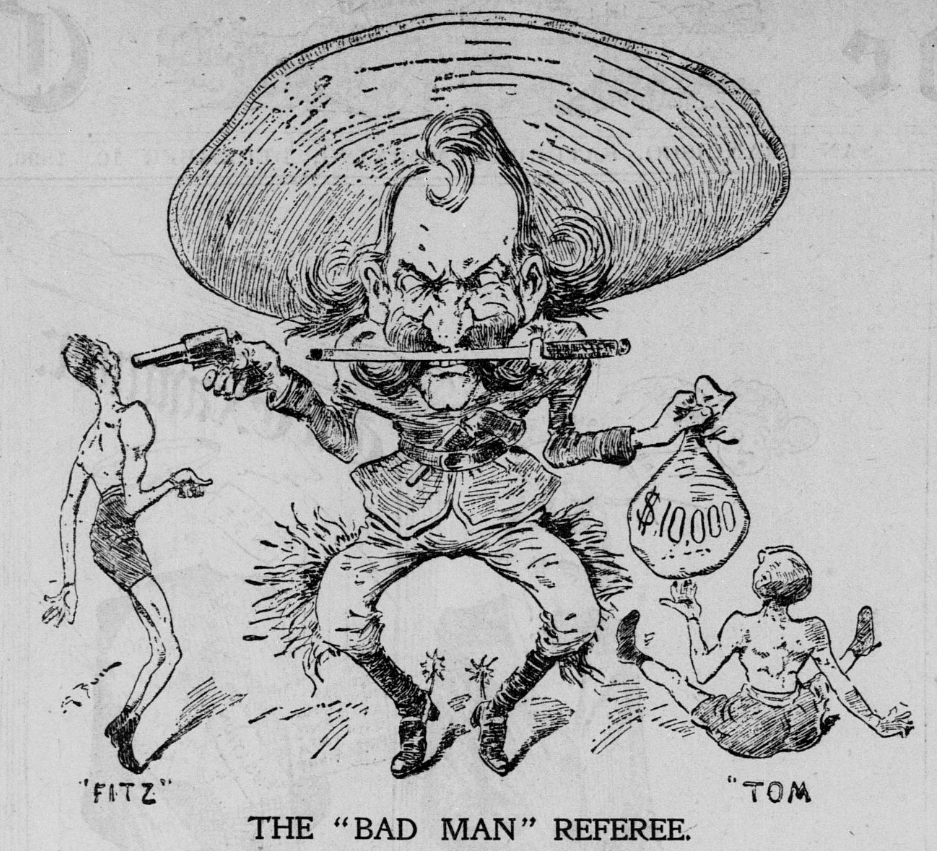
The problem was that almost everyone else saw the punch as a legitimate hit to the solar plexus. There was immediate talk of the match being fixed with Earp in on the scam. An injunction was placed on the money and the fight moved to the courtroom. Even though Earp was acquitted of any fixing charges, he remained guilty in the eyes of the public.
In his lifetime, this event severely denigrated the reputation of Wyatt Earp and accusations followed him until he died in 1929 of liver disease at age 80. It wasn’t until Lake published his biography that Wyatt Earp regained a positive image, although it was a fanciful and glowing account that was only tangentially connected to reality.



